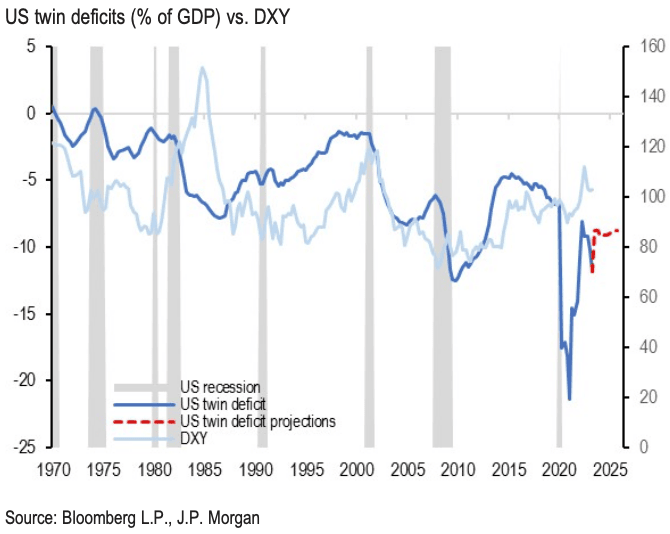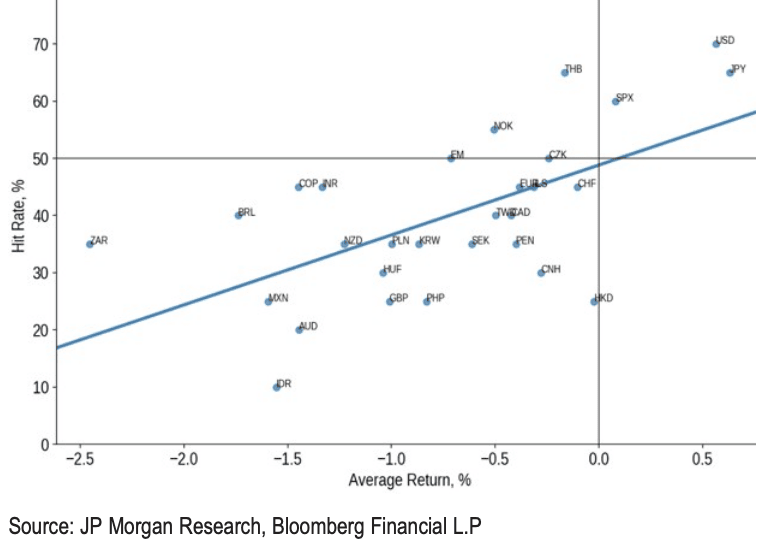GBP/USD Rate Pointed Lower as August, Macro Setup Favours USD Says JP Morgan
- Written by: Gary Howes
-

The Chase Tower, New York © Kristen Cavanaugh, Flickr, reproduced under CC licensing
The U.S. Dollar can maintain its recent trend of appreciation helped by favourable seasonal trends and will be untroubled by a recent rating agency downgrade of U.S. debt, shows new research from JP Morgan.
Analysts at the Wall Street lender and investment bank say the Dollar's outlook is also underpinned by a favourable macroeconomic setup that includes higher U.S. interest rates and ongoing U.S. economic outperformance.
"In our view, the near-term macro landscape matters more and should lend support to the dollar. Our view in recent weeks has been to be defensive with a bullish USD bias given resilience in US data and substantial softening in European/China data, amid an environment in which the dollar is yielding 5% and G4 central bank balance sheets are shrinking at a record pace," says Meera Chandan, a foreign exchange analyst at JP Morgan in London.
The recent downgrading of U.S. debt by Fitch garnered much attention amongst market participants and analysts alike but is seen as being of little consequence for the currency, indeed, the Dollar has appreciated through the episode.
"The mechanical transmission from the ratings downgrade by itself shouldn't be material for FX," says Chandan.
"Not only does USD benefit from its reserve FX status, but previous such downgrades have not resulted in persistent FX weakness or reduced foreign sponsorship without a major domestic event," she adds.
The Dollar has outperformed most of its major peers over the course of the past month with the Euro to Dollar exchange rate fading below 1.10, having been as high as 1.12 in July. The Pound to Dollar exchange rate has meanwhile retraced a move that saw it peak at 1.31 and is back just below 1.27.
JP Morgan's foreign exchange rate research team say in a weekly briefing the near-term outlook is still USD-bullish owing to U.S. economic exceptionalism, increasing Treasury supply and quantitative tightening at the Federal Reserve, all of which are widening yield spreads in favour of the U.S. Dollar.
Furthermore, August seasonality tends to favour the Dollar and "higher commodity prices are all sources of support," says Chandan.
Above: Avg returns & hit rates for all xxx/USD pairs (including EM). Also includes SPX & the JPM EM Excess Return Tradable Index (JMFXELMA Index) as ‘EM’. "Seasonality favour the USD in August" - JP Morgan.
JP Morgan's research shows August is a poor liquidity month in macro markets owing to investor deleveraging that tends to be USD-bullish and weighs 'high-yielder' currencies (of which the Pound is now routinely classed) given positioning.
Researchers acknowledge that the U.S. does nevertheless have fiscal challenges to contend with, which include a budget deficit that is at a record for a non-recessionary period.
Furthermore, the country's current account balance - a result of imports exceeding exports - is something that can weigh at some point in the future.
But, "this is a headwind for the dollar over the multi-year horizon, but not on a multi-month one," says Chandan.

Above: Twin deficits matter for the Dollar, but are more of a long-run theme. Image courtesy of JP Morgan.







